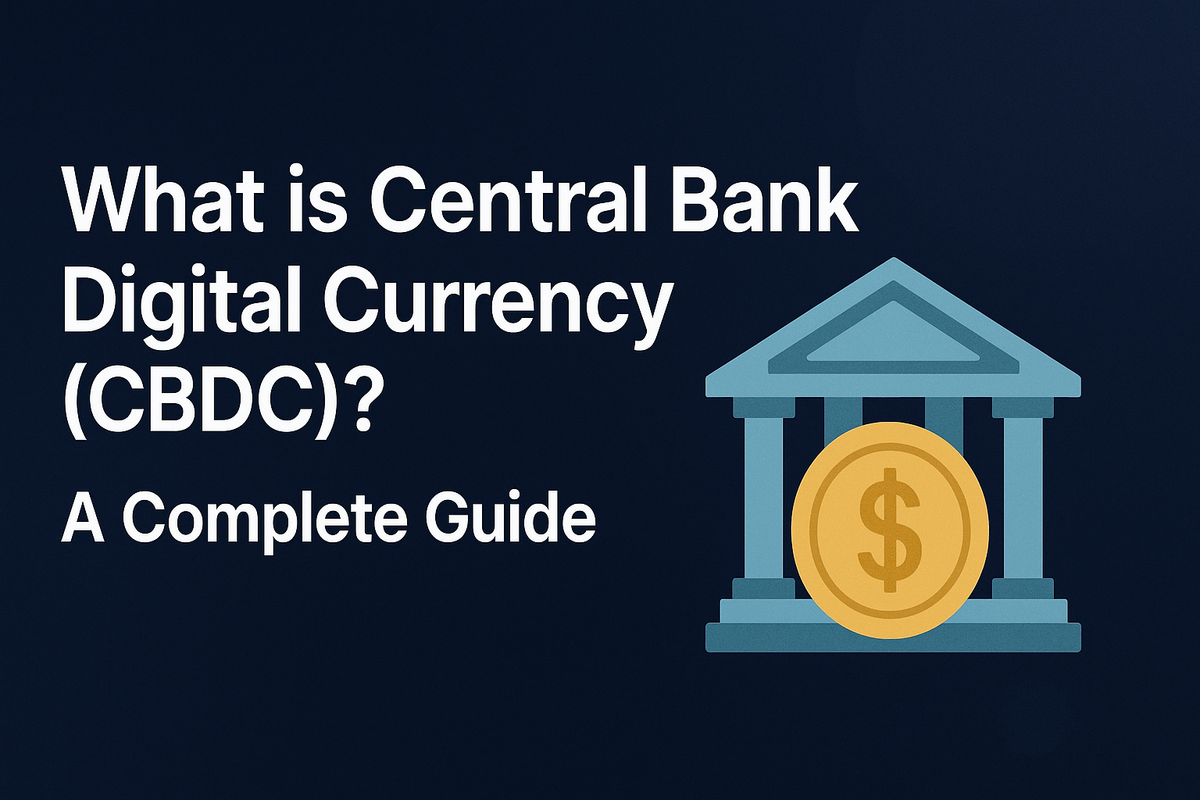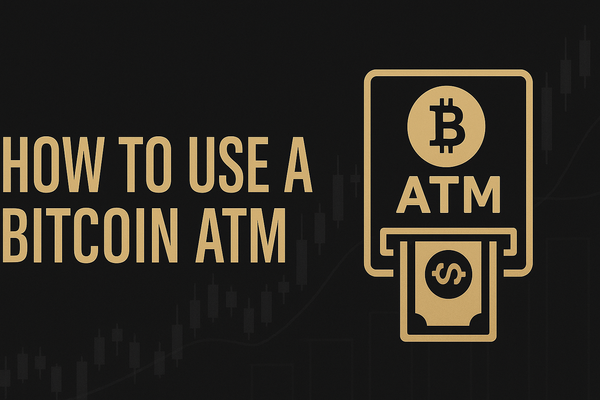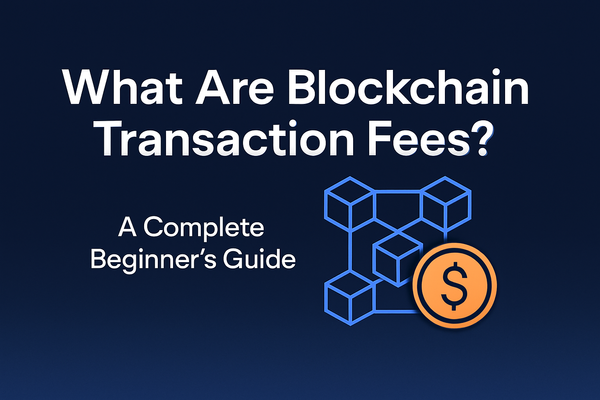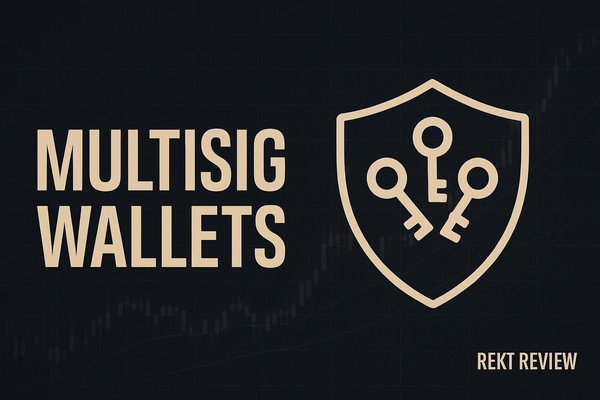What is Central Bank Digital Currency (CBDC)? A Complete Guide
Central Bank Digital Currencies (CBDCs) are transforming the future of money. Explore how they work, their benefits, risks, and global progress.

In today's rapidly evolving digital economy, the concept of money is undergoing a major transformation. One of the most discussed innovations in this space is the Central Bank Digital Currency (CBDC). Designed and regulated by governments, CBDCs aim to offer a digital alternative to traditional cash while maintaining the stability and trust associated with fiat currencies.
As countries around the world explore the possibilities of issuing their own digital currencies, understanding what a CBDC is—and why it matters—has become essential. From streamlining payments to promoting financial inclusion, CBDCs could play a critical role in shaping the future of money.
In this article, we’ll break down exactly what Central Bank Digital Currencies are, how they work, their potential benefits and challenges, and what their rise could mean for economies worldwide.
Understanding CBDC
A Central Bank Digital Currency (CBDC) is a digital form of a country's official currency, issued and backed by its central bank. Unlike cryptocurrencies like Bitcoin, which are decentralized and operate independently of any authority, CBDCs are centralized and represent a direct claim on the central bank itself. In essence, a CBDC is just as trustworthy as physical cash but exists in a purely digital form.
CBDCs are designed to function alongside cash and existing digital payment methods, not replace them entirely. They can be used by individuals, businesses, and financial institutions for everyday transactions, offering the convenience of digital payments with the security and reliability of a government-backed currency.
Key characteristics of a CBDC include government issuance, legal tender status, and the potential to operate offline in some cases. They are typically programmable, meaning certain conditions or rules can be embedded into transactions, offering new possibilities for monetary policy and financial innovation.
Unlike private bank deposits or digital wallets, owning a CBDC means holding a direct, risk-free asset from the central bank. This could help stabilize payment systems, enhance financial inclusion, and offer new ways for governments to implement and control monetary policies more efficiently.
Types of CBDC
Central Bank Digital Currencies generally fall into two main categories: Retail CBDCs and Wholesale CBDCs. Each type serves a different purpose within the financial system, depending on who uses it and how it’s accessed.
Retail CBDCs are designed for everyday use by the general public. They act as a digital version of cash, allowing individuals and businesses to make payments quickly and securely. For example, a retail CBDC could be used to buy groceries, pay bills, or transfer money between friends, much like a mobile payment app but issued directly by a central bank.
Wholesale CBDCs, on the other hand, are intended for financial institutions and large-scale transactions. They aim to improve the efficiency and security of payments between banks, central banks, and other major players in the financial system. A wholesale CBDC could be used to settle large interbank transactions in real-time, reducing settlement risks and costs.
By offering both retail and wholesale options, central banks can tailor CBDCs to meet the unique needs of different users, from individual consumers to institutional players.
Global Initiatives and Progress
Interest in Central Bank Digital Currencies is growing rapidly around the world. According to the Atlantic Council's CBDC tracker, over 130 countries, representing more than 98% of global GDP, are currently exploring or developing CBDCs. Some nations are in the research phase, while others have launched pilot programs or fully implemented digital currencies.
China is one of the leaders in CBDC development with its Digital Yuan (also called e-CNY). The project has undergone extensive public testing and aims to modernize payments while giving the government more control over the financial system. Similarly, Sweden's e-Krona project reflects a push toward a cashless society, offering citizens a secure digital alternative to cash.
Smaller countries like the Bahamas have already launched a full-scale CBDC called the Sand Dollar, making them pioneers in real-world digital currency deployment. Meanwhile, the European Central Bank and the Federal Reserve are cautiously exploring digital euro and digital dollar proposals, conducting studies and consultations with the public and private sectors.
Globally, CBDCs are seen as tools to strengthen payment infrastructures, enhance financial inclusion, and protect monetary sovereignty against the rise of private digital currencies. As competition heats up, more nations are expected to accelerate their CBDC efforts in the coming years.
Benefits of CBDC
The introduction of Central Bank Digital Currencies offers a range of potential benefits that could transform modern financial systems. One of the biggest advantages is enhanced payment efficiency. CBDCs can enable faster, cheaper, and more secure transactions, both domestically and across borders, reducing reliance on slow and costly traditional banking systems.
Another major benefit is financial inclusion. By providing digital access to money through simple mobile apps, CBDCs could help bring banking services to millions of unbanked or underbanked individuals, especially in developing regions. People without access to traditional banks could securely store and transfer money using only a smartphone.
Monetary policy implementation could also improve with CBDCs. Central banks would have a direct line to the economy, allowing them to issue stimulus payments, manage interest rates, and respond to crises more efficiently.
CBDCs could also help lower transaction costs for both businesses and consumers. By removing the need for multiple intermediaries in the payment process, transactions could become more affordable and accessible.
Finally, a government-backed digital currency could help maintain the sovereignty of national currencies and offer a public alternative to privately issued digital assets like stablecoins or cryptocurrencies.
Challenges and Concerns
While Central Bank Digital Currencies offer exciting possibilities, they also raise significant challenges and concerns that must be carefully addressed.
One of the biggest issues is privacy. A CBDC could allow governments to track individual transactions in real-time, raising fears about surveillance and the loss of financial anonymity. Striking a balance between transparency and personal privacy will be critical.
Cybersecurity risks also pose a major threat. As a digital system, a CBDC could become a target for hackers, potentially putting entire national economies at risk if not properly secured. Robust security measures will be essential to build trust among users.
The impact of CBDCs on commercial banks is another concern. If individuals move their deposits from private banks to central banks in large numbers, it could destabilize traditional banking systems and limit banks' ability to lend.
Additionally, there are significant legal and regulatory hurdles. Questions about jurisdiction, cross-border transactions, and the integration of CBDCs into existing laws need careful consideration to avoid unintended consequences.
Without thoughtful design and strong protections, CBDCs could introduce more risks than rewards. Governments and central banks must proceed cautiously to ensure these digital currencies support, rather than disrupt, financial stability.
CBDC vs. Cryptocurrencies
While Central Bank Digital Currencies and cryptocurrencies may seem similar at first glance, they are fundamentally different in important ways.
The most obvious difference is centralization. CBDCs are issued, controlled, and regulated by central banks, whereas cryptocurrencies like Bitcoin operate on decentralized networks without any single authority. This means governments can directly manage CBDCs, while cryptocurrencies are driven by community consensus and open-source protocols.
Stability is another key difference. CBDCs are designed to maintain a stable value, similar to traditional money, while cryptocurrencies often experience high levels of price volatility. This makes CBDCs better suited for everyday transactions and long-term savings.
In terms of use cases, CBDCs aim to modernize national payment systems and enhance monetary policy tools. Cryptocurrencies, on the other hand, offer new possibilities for decentralized finance (DeFi), borderless payments, and alternative investments outside traditional banking systems.
Ultimately, CBDCs and cryptocurrencies represent two very different visions for the future of money—one centralized and government-backed, the other decentralized and community-driven.
What is Central Bank Digital Currency (CBDC)? FAQ
A CBDC is a digital form of a country's official currency, issued and regulated by its central bank, offering the security of cash in digital form.
CBDCs are centralized and backed by governments, while cryptocurrencies like Bitcoin are decentralized and operate without central control.
Benefits include faster payments, lower transaction costs, improved financial inclusion, and stronger support for monetary policy.
Risks include privacy concerns, cybersecurity threats, potential disruptions to banks, and complex legal and regulatory challenges.
China, Sweden, the Bahamas, and several other nations are leading CBDC projects, with pilots and launches already underway.
Future Outlook
The future of Central Bank Digital Currencies looks promising, but it also carries uncertainty. As technology advances and cash usage declines, more governments are likely to push forward with CBDC development to modernize their economies. Digital currencies could eventually become a core part of the global financial system, offering faster payments, better access to money, and more resilient monetary policies.
However, the path ahead is not without obstacles. Privacy concerns, regulatory complexities, and the need for global cooperation on cross-border payments will all shape how CBDCs evolve. Countries may adopt very different models, leading to a diverse landscape of digital currencies rather than a single global standard.
Experts predict that within the next decade, many major economies—including the European Union, the United States, and China—will either have launched or finalized plans for their own CBDCs. How these digital currencies are designed and implemented will play a critical role in determining their success—and their impact on the future of money.





